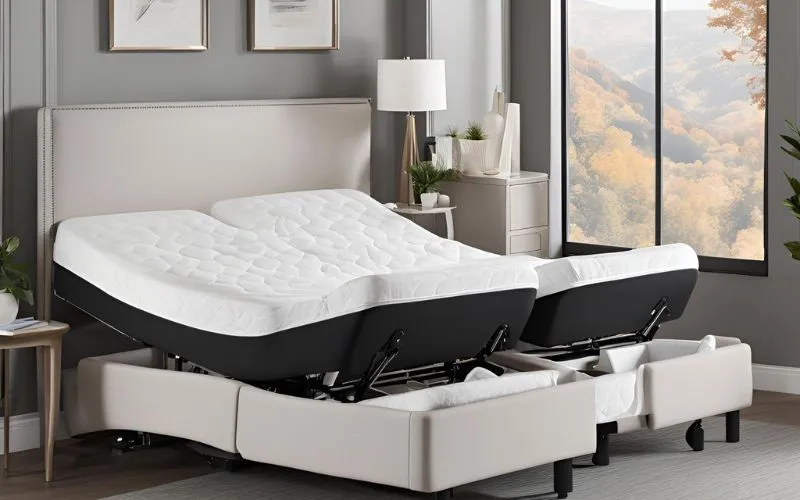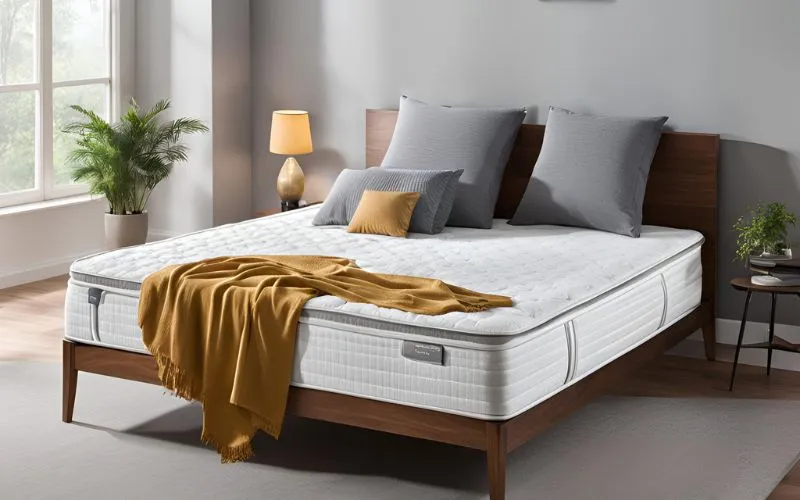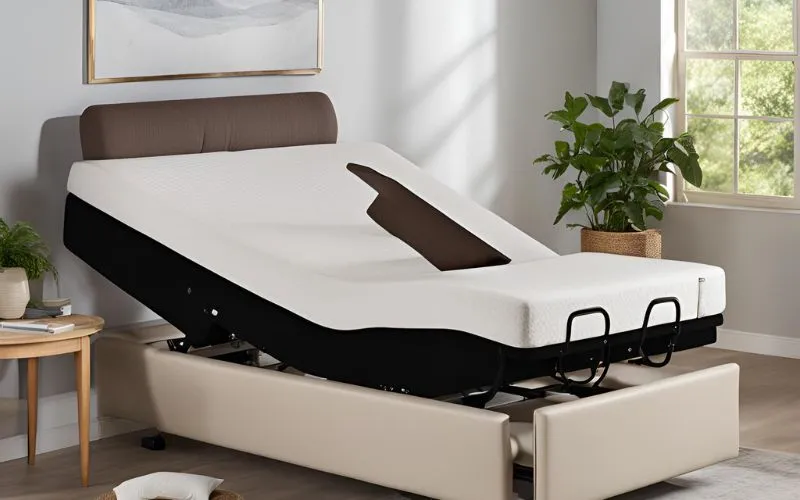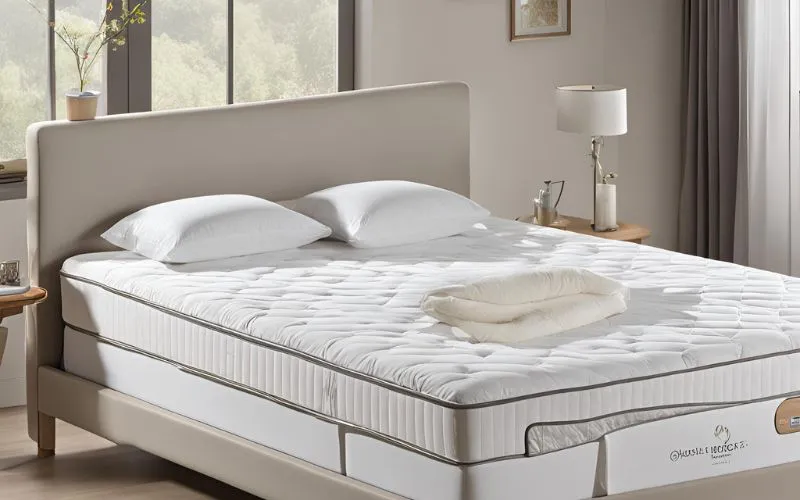How to Sleep for Healing with Adjustable Beds

Introduction
Welcome to our comprehensive guide on how to sleep for healing with adjustable beds. In this article, we will explore the benefits of sleeping on adjustable beds for healing, how to choose the best adjustable bed for healing, and valuable tips for improving sleep quality and healing on adjustable beds. Whether you are recovering from an injury, managing chronic pain, or seeking a comfortable and supportive sleep environment, adjustable beds offer a range of therapeutic benefits that can significantly enhance your sleep experience.
What Are Adjustable Beds?
Adjustable beds, also known as power beds or electric beds, are designed with an adjustable multi-hinged lying surface that can be easily raised or lowered to create various sleeping and resting positions. These beds are equipped with a motorized mechanism that allows the upper and lower body segments to be adjusted independently, providing personalized support and comfort. Additionally, adjustable beds often feature other advanced functions such as massage settings, zero-gravity positioning, and preset memory functions.
Benefits of Sleeping with Adjustable Beds for Healing
Sleeping on an adjustable bed can offer numerous benefits for healing and overall well-being. The ability to customize your sleep position can alleviate pressure points, reduce discomfort, and promote better circulation. Adjustable beds can also provide relief for individuals with conditions such as acid reflux, sleep apnea, and swelling in the legs. Additionally, the ergonomic support offered by adjustable beds can contribute to improved spinal alignment and reduced muscle tension, leading to enhanced relaxation and faster recovery.
Choosing the Best Adjustable Bed for Healing
When selecting an adjustable bed for healing purposes, there are several important considerations that can significantly impact the overall comfort and therapeutic benefits.
- Construction: The construction of the adjustable bed plays a crucial role in its durability, stability, and long-term performance. Look for sturdy materials and a reliable mechanism for adjusting the bed’s position.
- Mattress Compatibility: Choosing the right mattress is essential for ensuring both comfort and proper support. Consider mattresses designed specifically for adjustable beds, as well as those that offer adequate flexibility and responsiveness to the bed’s movements.
- Range of Motion: Assessing the bed’s range of motion is important, as it determines the variety of positions that can be achieved for optimal comfort and therapeutic support. Look for beds that offer a wide range of adjustments to accommodate different healing needs.
- Additional Features: Explore the additional features offered by adjustable beds, such as massage functions, USB charging ports, under-bed lighting, and zero-gravity positioning, which can enhance the healing experience and overall comfort.
- Ease of Use: Consider the user-friendliness of the adjustable bed, including the convenience of adjusting settings, operating the bed’s features, and maintaining its functionality.
- Warranty and Return Policies: Evaluating the warranty coverage and return policies is essential for ensuring peace of mind and protection against potential issues or dissatisfaction with the bed’s performance.
- Customer Reviews:Researching customer reviews and experiences with specific adjustable bed models can provide valuable insights into the bed’s performance, durability, and overall satisfaction among users.
By carefully evaluating these factors, individuals can make informed decisions and select the best adjustable bed that aligns with their healing needs and preferences.
How to Sleep Properly on an Adjustable Bed for Healing
Learning how to sleep properly on an adjustable bed involves understanding the recommended sleep positions and making necessary adjustments to align the body for healing and comfort. By utilizing the bed’s adjustable features, individuals can find relief from back pain, improve circulation, and enhance breathing. Establishing proper sleep posture and experimenting with different bed positions can significantly contribute to a rejuvenating and restorative sleep experience on an adjustable bed.
Proper sleep posture plays a crucial role in promoting healing and restoring vitality. Here are some key points to consider for achieving the best sleep posture on an adjustable bed:
- Align the head and neck with the rest of the spine to reduce neck strain and promote spinal alignment.
- Adjust the upper body elevation to relieve pressure on the chest, aiding in better breathing and alleviating symptoms of acid reflux.
- Elevate the legs to enhance circulation, reduce swelling, and minimize strain on the lower back and hips.
Based on individual needs and preferences, several sleep positions can be beneficial when using an adjustable bed. These include:
- Back sleeping with the upper body slightly elevated to maintain proper spine alignment and improve breathing.
- Side sleeping with the head and knees slightly elevated to alleviate pressure on the hips and shoulders, while promoting circulation.
- Zero-gravity position, where the upper body and legs are elevated to distribute body weight evenly, reducing strain on pressure points and enhancing comfort.
Creating an optimal sleep environment is essential for maximizing the healing benefits of an adjustable bed. Consider the following factors to enhance restorative sleep:
- Selecting a comfortable mattress with appropriate firmness to support the body’s natural curves and reduce pressure points.
- Using pillows to provide additional support and maintain proper spinal alignment in various sleep positions.
- Regulating room temperature and minimizing light and noise disruptions to promote deep and uninterrupted sleep.
Tips for Improving Sleep Quality and Healing on Adjustable Beds
Enhancing sleep quality and promoting healing on adjustable beds can be achieved through various practical tips and strategies. From incorporating relaxation techniques and mindfulness practices to creating a sleep-conducive environment, individuals can maximize the therapeutic benefits of adjustable beds. Furthermore, maintaining a consistent sleep schedule, engaging in light stretching exercises, and choosing suitable bedding accessories can further enhance the overall sleep quality and healing potential associated with adjustable beds.
Conclusion
As we conclude our comprehensive guide on how to sleep for healing with adjustable beds, it’s evident that these innovative sleep solutions offer remarkable advantages for individuals seeking restful and therapeutic sleep experiences. With the ability to customize sleep positions, alleviate pressure, and enhance overall comfort, adjustable beds serve as valuable tools for promoting healing, reducing pain, and enhancing overall well-being. By integrating practical tips and optimizing sleep strategies, individuals can harness the full potential of adjustable beds to achieve restorative sleep and support their healing journey.




